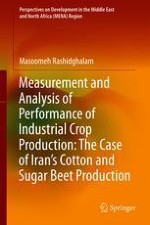2018 | Buch
Measurement and Analysis of Performance of Industrial Crop Production: The Case of Iran’s Cotton and Sugar Beet Production
verfasst von: Dr. Masoomeh Rashidghalam
Verlag: Springer Singapore
Buchreihe : Perspectives on Development in the Middle East and North Africa (MENA) Region
